Immunology/Inflammation
The immune and inflammation-related pathway including the Toll-like receptors pathway, the B cell receptor signaling pathway, the T cell receptor signaling pathway, etc.
Toll-like receptors (TLRs) play a central role in host cell recognition and responses to microbial pathogens. TLR4 initially recruits TIRAP and MyD88. MyD88 then recruits IRAKs, TRAF6, and the TAK1 complex, leading to early-stage activation of NF-κB and MAP kinases [1]. TLR4 is endocytosed and delivered to intracellular vesicles and forms a complex with TRAM and TRIF, which then recruits TRAF3 and the protein kinases TBK1 and IKKi. TBK1 and IKKi catalyze the phosphorylation of IRF3, leading to the expression of type I IFN [2].
BCR signaling is initiated through ligation of mIg under conditions that induce phosphorylation of the ITAMs in CD79, leading to the activation of Syk. Once Syk is activated, the BCR signal is transmitted via a series of proteins associated with the adaptor protein B-cell linker (Blnk, SLP-65). Blnk binds CD79a via non-ITAM tyrosines and is phosphorylated by Syk. Phospho-Blnk acts as a scaffold for the assembly of the other components, including Bruton’s tyrosine kinase (Btk), Vav 1, and phospholipase C-gamma 2 (PLCγ2) [3]. Following the assembly of the BCR-signalosome, GRB2 binds and activates the Ras-guanine exchange factor SOS, which in turn activates the small GTPase RAS. The original RAS signal is transmitted and amplified through the mitogen-activated protein kinase (MAPK) pathway, which including the serine/threonine-specific protein kinase RAF followed by MEK and extracellular signal related kinases ERK 1 and 2 [4]. After stimulation of BCR, CD19 is phosphorylated by Lyn. Phosphorylated CD19 activates PI3K by binding to the p85 subunit of PI3K and produce phosphatidylinositol-3,4,5-trisphosphate (PIP3) from PIP2, and PIP3 transmits signals downstream [5].
Central process of T cells responding to specific antigens is the binding of the T-cell receptor (TCR) to specific peptides bound to the major histocompatibility complex which expressed on antigen-presenting cells (APCs). Once TCR connected with its ligand, the ζ-chain–associated protein kinase 70 molecules (Zap-70) are recruited to the TCR-CD3 site and activated, resulting in an initiation of several signaling cascades. Once stimulation, Zap-70 forms complexes with several molecules including SLP-76; and a sequential protein kinase cascade is initiated, consisting of MAP kinase kinase kinase (MAP3K), MAP kinase kinase (MAPKK), and MAP kinase (MAPK) [6]. Two MAPK kinases, MKK4 and MKK7, have been reported to be the primary activators of JNK. MKK3, MKK4, and MKK6 are activators of P38 MAP kinase [7]. MAP kinase pathways are major pathways induced by TCR stimulation, and they play a key role in T-cell responses.
Phosphoinositide 3-kinase (PI3K) binds to the cytosolic domain of CD28, leading to conversion of PIP2 to PIP3, activation of PKB (Akt) and phosphoinositide-dependent kinase 1 (PDK1), and subsequent signaling transduction [8].
References
[1] Kawai T, Akira S. The role of pattern-recognition receptors in innate immunity: update on Toll-like receptors[J]. Nature immunology, 2010, 11(5): 373-384.
[2] Kawai T, Akira S. Toll-like receptors and their crosstalk with other innate receptors in infection and immunity[J]. Immunity, 2011, 34(5): 637-650.
[3] Packard T A, Cambier J C. B lymphocyte antigen receptor signaling: initiation, amplification, and regulation[J]. F1000Prime Rep, 2013, 5(40.10): 12703.
[4] Zhong Y, Byrd J C, Dubovsky J A. The B-cell receptor pathway: a critical component of healthy and malignant immune biology[C]//Seminars in hematology. WB Saunders, 2014, 51(3): 206-218.
[5] Baba Y, Matsumoto M, Kurosaki T. Calcium signaling in B cells: regulation of cytosolic Ca 2+ increase and its sensor molecules, STIM1 and STIM2[J]. Molecular immunology, 2014, 62(2): 339-343.
[6] Adachi K, Davis M M. T-cell receptor ligation induces distinct signaling pathways in naive vs. antigen-experienced T cells[J]. Proceedings of the National Academy of Sciences, 2011, 108(4): 1549-1554.
[7] Rincón M, Flavell R A, Davis R A. The Jnk and P38 MAP kinase signaling pathways in T cell–mediated immune responses[J]. Free Radical Biology and Medicine, 2000, 28(9): 1328-1337.
[8] Bashour K T, Gondarenko A, Chen H, et al. CD28 and CD3 have complementary roles in T-cell traction forces[J]. Proceedings of the National Academy of Sciences, 2014, 111(6): 2241-2246.
Targets for Immunology/Inflammation
- Cyclic GMP-AMP Synthase(1)
- Apoptosis(137)
- 5-Lipoxygenase(18)
- TLR(106)
- Papain(2)
- PGDS(1)
- PGE synthase(26)
- SIKs(10)
- IκB/IKK(83)
- AP-1(2)
- KEAP1-Nrf2(47)
- NOD1(1)
- NF-κB(265)
- Interleukin Related(129)
- 15-lipoxygenase(2)
- Others(10)
- Aryl Hydrocarbon Receptor(35)
- CD73(16)
- Complement System(46)
- Galectin(30)
- IFNAR(19)
- NO Synthase(78)
- NOD-like Receptor (NLR)(37)
- STING(84)
- Reactive Oxygen Species(434)
- FKBP(14)
- eNOS(4)
- iNOS(24)
- nNOS(21)
- Glutathione(37)
- Adaptive Immunity(144)
- Allergy(129)
- Arthritis(25)
- Autoimmunity(134)
- Gastric Disease(64)
- Immunosuppressants(27)
- Immunotherapeutics(3)
- Innate Immunity(411)
- Pulmonary Diseases(76)
- Reactive Nitrogen Species(43)
- Specialized Pro-Resolving Mediators(42)
- Reactive Sulfur Species(24)
Products for Immunology/Inflammation
- Cat.No. Nombre del producto Información
-
GC18655
3-hydroxy Decanoic Acid methyl ester
3-hydroxy Decanoic acid methyl ester is a hydroxylated fatty acid methyl ester that has been found in methyl-branched poly(3-hydroxyalkanoate) (PHA) polymers produced by P.
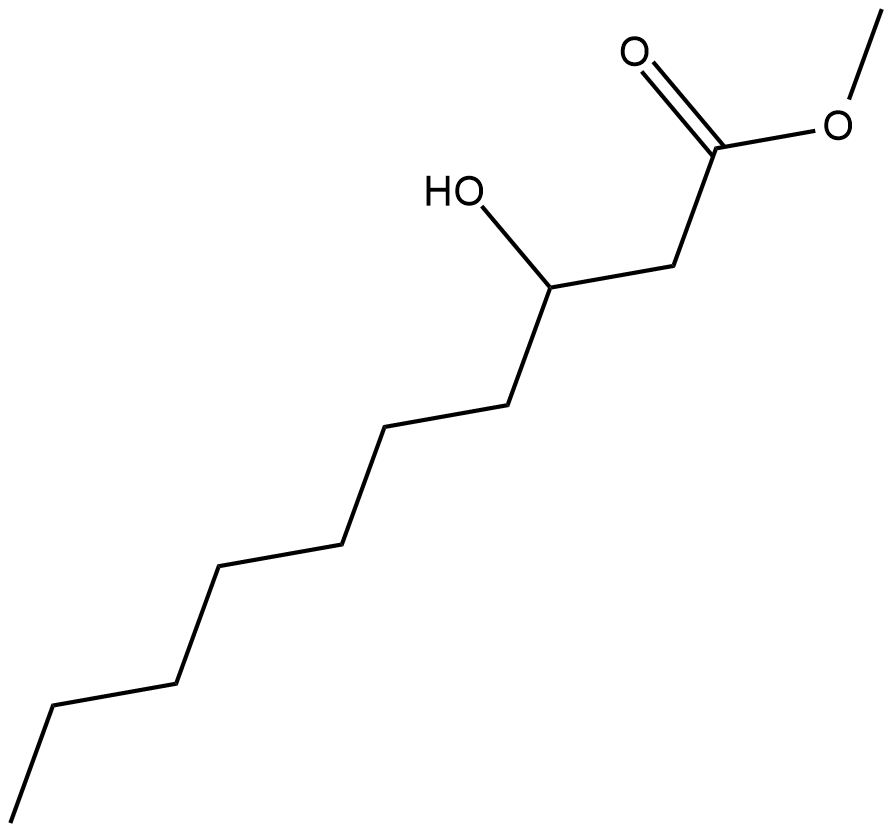
-
GC42275
3-hydroxy Desloratidine
3-hydroxy Desloratidine is a major metabolite of desloratadine , a tricyclic antagonist of the histamine H1 receptor.

-
GC42276
3-hydroxy Docosanoic Acid
3-hydroxy Docosanoic acid is a hydroxylated form of the 22-carbon saturated docosanoic acid.

-
GC45774
3-hydroxy Heptadecanoic Acid
A hydroxy fatty acid

-
GC40474
3-hydroxy Lignoceric Acid
3-hydroxy Lignoceric acid is a hydroxylated form of the 24-carbon saturated lignoceric acid.

-
GC49847
3-hydroxy methyl Cefuroxime
La 3-hidroximetilcefuroxima es un producto de degradaciÓn de la cefuroxima.

-
GC42280
3-hydroxy Myristic Acid methyl ester
3-hydroxy Myristic acid methyl ester is a hydroxylated fatty acid methyl ester that has been found in E.

-
GC42281
3-hydroxy Palmitic Acid
3-hydroxy Palmitic acid is a form of the 16:0 lipid palmitic acid.

-
GC42282
3-hydroxy Palmitic Acid methyl ester
3-hydroxy Palmitic acid methyl ester (3-hydroxy PAME) is an esterized long-chain fatty acid involved in quorum sensing in R.

-
GC42286
3-hydroxy Stearic Acid
3-hydroxy Stearic acid is a long-chain saturated fatty acid and intermediate in the production of 3-hydroxy octadecanedioic acid from stearic acid.

-
GC42288
3-hydroxy Tridecanoic Acid
3-hydroxy Tridecanoic acid is a 13-carbon saturated fatty acid found in bacterial lipopolysaccharides (LPS).

-
GC49819
3-Hydroxy-4-methyl-2(5H)-thiophenone
A degradation product of cefaclor

-
GC45336
3-hydroxy-DL-Kynurenine
La 3-hidroxi-DL-quinurenina, un metabolito del triptÓfano, es una posible neurotoxina endÓgena cuyos niveles elevados se han descrito en varios trastornos neurodegenerativos.

-
GC49364
3-Hydroxycoumarin
La 3-hidroxicumarina es un potente inhibidor redox de la 15-LOX-1 humana.

-
GC45337
3-Hydroxyterphenyllin
La 3-hidroxiterfenillina es un metabolito de Aspergillus candidus. La 3-hidroxiterfenillina suprime la proliferaciÓn y causa citotoxicidad contra las células A2780/CP70 y OVCAR-3. La 3-hidroxiterfenilina induce la detenciÓn de la fase S y la apoptosis. La 3-hidroxiterfenilina tiene potencial para la investigaciÓn del cÁncer de ovario.

-
GC31290
3-Indolepropionic acid
Se ha demostrado que el Ácido 3-indolpropiÓnico es un poderoso antioxidante y tiene potencial en el tratamiento de la enfermedad de Alzheimer.
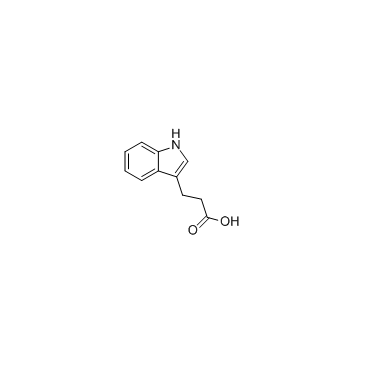
-
GC48457
3-keto Fusidic Acid
An active metabolite of fusidic acid

-
GC64630
3-O-Acetyl-α-boswellic acid
El Ácido 3-O-acetil-α-boswélico suprime la funciÓn de las células T.
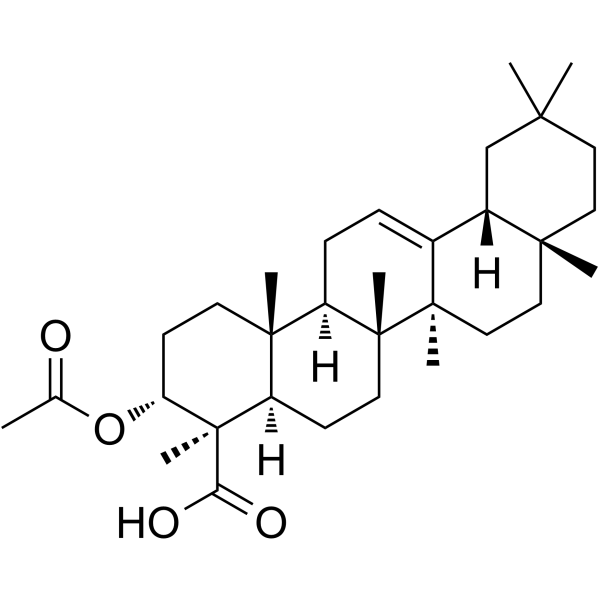
-
GC48488
3-Oxobetulin Acetate
A derivative of betulin

-
GC40692
3-Propylxanthine
La 3-propilxantina actÚa como antagonista selectivo y competitivo de los receptores A2B con Ki de 7 μM.

-
GC45354
4β-Hydroxywithanolide E
4β-Hydroxywithanolide E, aislado de Physalis peruviana L.

-
GC48437
4'-Acetyl Chrysomycin A
A bacterial metabolite with antibacterial and anticancer activities

-
GC42406
4'-hydroxy Chalcone
La 4'-hidroxi Chalcona es una chalcona aislada de la raíz de regaliz, con actividad hepatoprotectora.

-
GC18527
4'-hydroxy Flurbiprofen
A major active metabolite of flurbiprofen
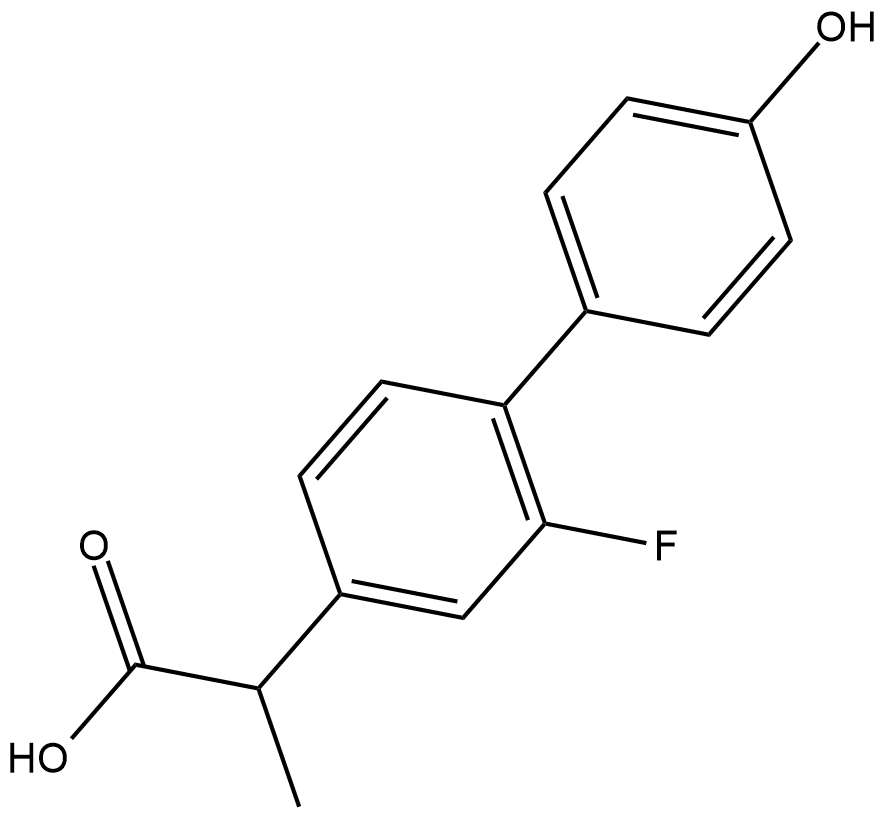
-
GC46608
4-(N-Boc-amino)piperidine
An organic building block

-
GC46609
4-(Phenylcarbonyl)benzoic Acid
A photooxidant

-
GC49337
4-Acetamidobenzenesulfonamide
A metabolite of asulam and sulfanilamide

-
GC42338
4-Aminobenzoic Acid hydrazide
La hidrazida del Ácido 4-aminobenzoico es un inhibidor irreversible de la mieloperoxidasa MPO con una IC50 de 0,3 μM.

-
GC42351
4-carboxy TEMPO
4-carboxy TEMPO is a nitroxide and spin label.

-
GC46630
4-CPPC
A MIF-2 inhibitor

-
GC42369
4-Deoxypyridoxine (hydrochloride)
4-Deoxypyridoxine (4-DPD) is a vitamin B6 antimetabolite with diverse biological activities.

-
GC42373
4-epi Minocycline
4-epi Minocycline is the main degradation product of and a potential impurity in commercial preparations of minocycline.

-
GC42374
4-epi-Chlortetracycline (hydrochloride)
Chlortetracycline is an analog of tetracycline, a broad spectrum antibiotic.

-
GC42401
4-hydroperoxy Cyclophosphamide
Un análogo activado de ciclofosfamida.

-
GC18858
4-hydroxy Alternariol
4-hydroxy Alternariol is a metabolite of the mycotoxin alternariol formed through cytochrome P450 (CYP450) metabolism.
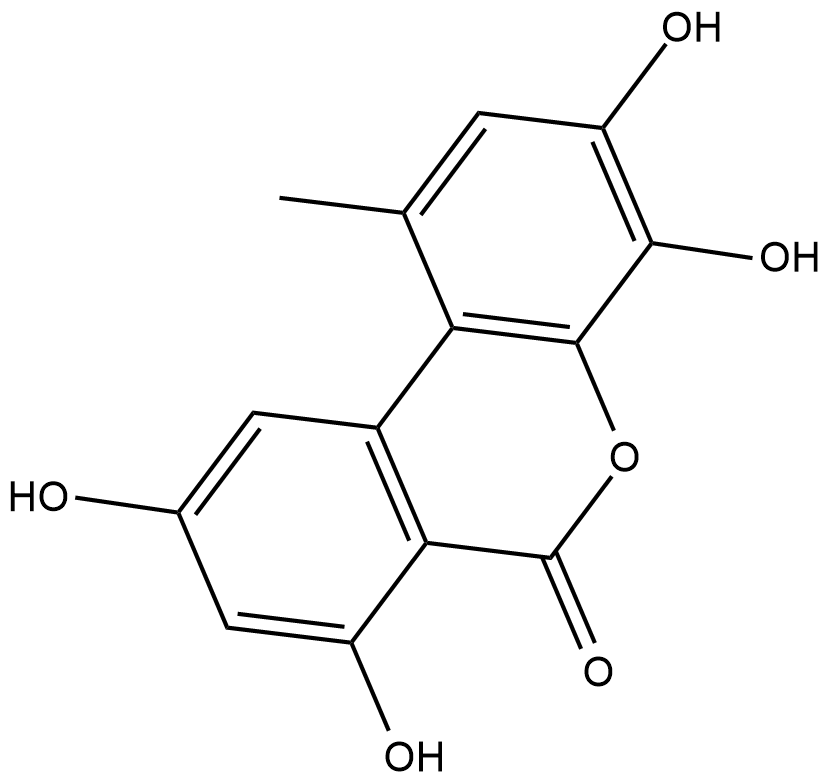
-
GC49575
4-hydroxy Omeprazole sulfide
A metabolite of omeprazole

-
GA20418
4-Hydroxy-hippuric acid
Polyphenol metabolite.

-
GC38663
4-Hydroxychalcone
La 4-hidroxicalcona es un metabolito de chalcona con actividades antiangiogénicas y antiinflamatorias.
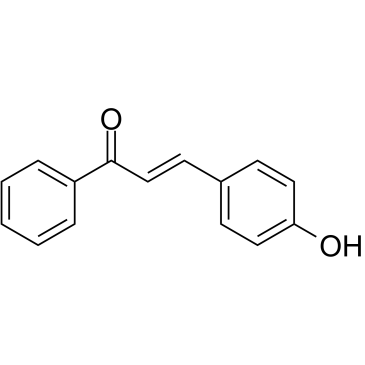
-
GC33815
4-Hydroxyphenylacetic acid
El Ácido 4-hidroxifenilacético, un importante metabolito de los polifenoles derivado de la microbiota, participa en la acciÓn antioxidante.
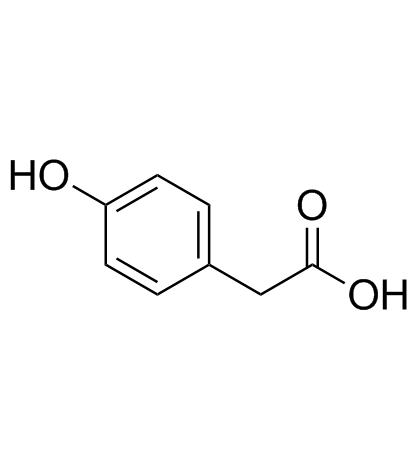
-
GC18853
4-isocyanato TEMPO
4-isocyanato TEMPO is a spin labeling reagent used to label the 2'-position in RNA.
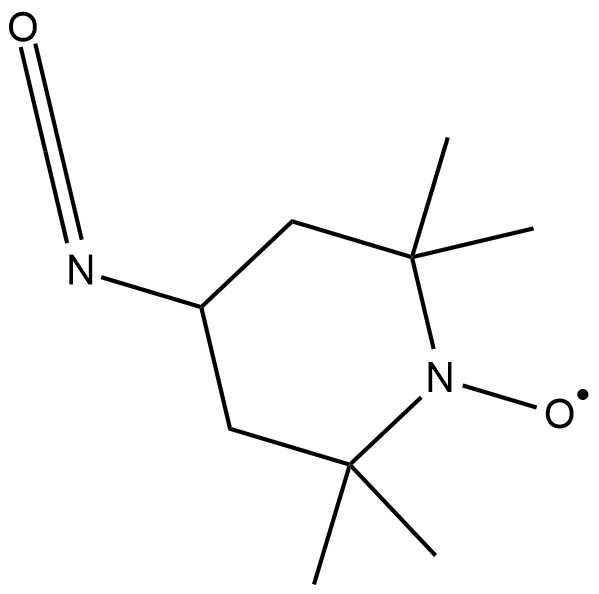
-
GC41299
4-Methylumbelliferyl Caprylate
4-Methylumbelliferyl caprylate (MUCAP) is a fluorogenic substrate for C8 esterase.

-
GC42448
4-Methylumbelliferyl-N-acetyl-α-D-Neuraminic Acid (sodium salt)
El Ácido 4-metilumbeliferil-N-acetil-α-D-neuramÍnico (sal de sodio) es un sustrato fluorescente utilizado para el ensayo de actividad de neuraminidasa.

-
GC42461
4-Nitrophenyl β-D-Cellobioside
4-Nitrophenyl β-D-cellobioside is a disaccharide and an enzyme substrate.

-
GC46672
4-Nitrophenyl Palmitate
A colorimetric lipase and esterase substrate

-
GC35143
4-O-Methyl honokiol
El 4-O-metil honokiol es un neolignano natural aislado de Magnolia officinalis, actÚa como un agonista de PPARγ e inhibe la actividad de NF-κB, utilizado para la investigaciÓn del cÁncer y la inflamaciÓn.
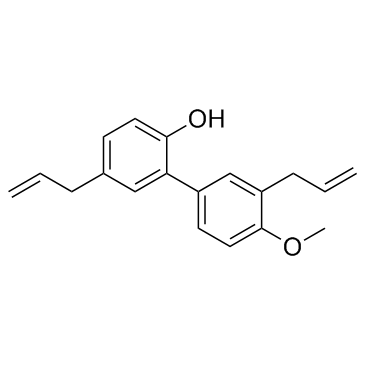
-
GC31648
4-Octyl Itaconate
El 4-Octil Itaconato (4-OI) es un derivado de itaconato permeable a la célula. El itaconato y el 4-Octil Itaconato tienen una reactividad similar con los tiolos, lo que hace que el 4-Octil Itaconato sea un sustituto adecuado del itaconato para estudiar su función biológica.
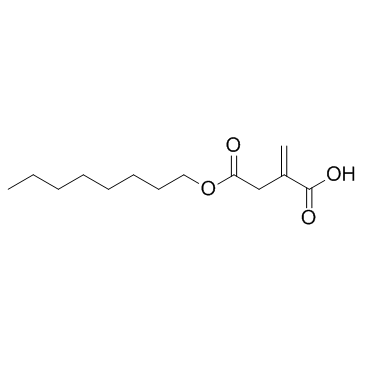
-
GC46673
4-octynyl Itaconate
El itaconato de 4 octinilo (ITalk) es una sonda bioortogonal especÍfica para la elaboraciÓn de perfiles quimioproteÓmicos cuantitativos y especÍficos del sitio de Itaconation en células vivas.

-
GC49127
4-oxo Cyclophosphamide
An inactive metabolite of cyclophosphamide

-
GC49244
4-oxo Isotretinoin
An active metabolite of isotretinoin

-
GC40477
4-Thiouracil
4-Thiouracil is a site-specific, photoactivatable probe used to detect RNA structures and nucleic acid-nucleic acid contacts.

-
GC18582
5'-hydroxy Meloxicam
A metabolite of meloxicam
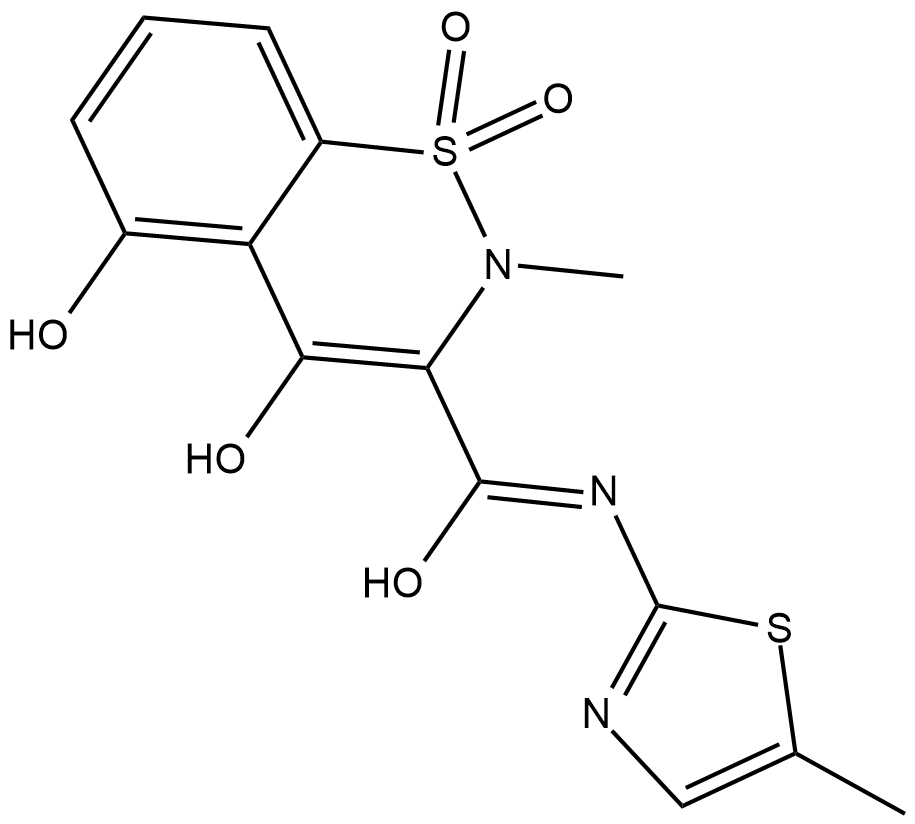
-
GC48381
5'-pApA (sodium salt)
A linearized form of cyclic di-AMP

-
GC48375
5'-pGpG (sodium salt)
A linearized form of cyclic di-GMP

-
GC49339
5(6)-Carboxy-2′,7′-dichlorofluorescein diacetate
El diacetato de 5(6)-carboxi-&2#8242;,7&2#8242;-diclorofluoresceína es un indicador fluorescente de permeación celular.

-
GC41126
5(S),12(S)-DiHETE
5(S),12(S)-DiHETE is a natural bioactive lipid derived from arachidonic acid.
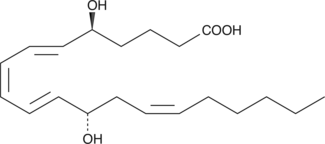
-
GC41127
5(S),15(S)-DiHETE
5(S),15(S)-DiHETE es un intermedio \5(S),15(S)-DiHETE is an “activated” intermediate, inhibits platelet aggregation with an IC50 of 1.3 μM.en_es_2021q4.md
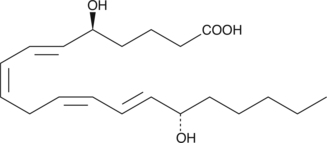
-
GC40782
5(Z),11(Z),14(Z)-Eicosatrienoic Acid
5(Z),11(Z),14(Z)-Eicosatrienoic acid is a polyunsaturated fatty acid found in various natural sources including maritime pine (Pinus pinaster) seed oil (MPSO), gymnospermae leaves and seeds, and freshwater gastropods.

-
GC46075
5,6-dimethyl-2-Thiouracil
A heterocyclic building block

-
GC48815
5,7,8-Trimethoxydictamnine
A quinoline alkaloid with antimalarial activity

-
GC52091
5,7-Dichlorothiazolo[5,4-d]pyrimidine
A building block
![5,7-Dichlorothiazolo[5,4-d]pyrimidine Chemical Structure 5,7-Dichlorothiazolo[5,4-d]pyrimidine Chemical Structure](/media/struct/GC5/GC52091.png)
-
GC52227
5-(3',4'-Dihydroxyphenyl)-γ-Valerolactone
An active metabolite of various polyphenols

-
GC40527
5-(Hydroxymethyl)-2'-deoxyuridine
5-(Hydroxymethyl)-2'-deoxyuridine is a nucleoside analog with anticancer and antiviral activities.

-
GC52413
5-Aminosalicylic Acid-d7
An internal standard for the quantification of 5-aminosalicylic acid

-
GC49827
5-Androstenetriol
An active metabolite of DHEA

-
GC45357
5-Chlorouracil

-
GC49233
5-Feruloylquinic Acid
El Ácido 5-feruloilquÍnico (5-FQA) posee efectos antioxidantes y actividades inhibidoras de la tirosinasa.

-
GC39760
5-Galloylquinic acid
Ácido 5-galoilquÍnico, un eliminador principal de las especies reactivas de oxÍgeno (ROS) en el té verde.
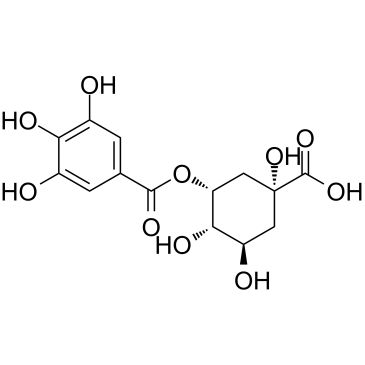
-
GC46033
5-Heneicosylresorcinol
An alkylresorcinol

-
GC42549
5-hydroxy Thiabendazole
5-hydroxy Thiabendazole (5-OH TBZ) is a major metabolite of the anthelmintic thiabendazole.

-
GC61638
5-Hydroxyoxindole
El 5-hidroxioxindol es un anÁlogo estructural del Ácido Úrico.
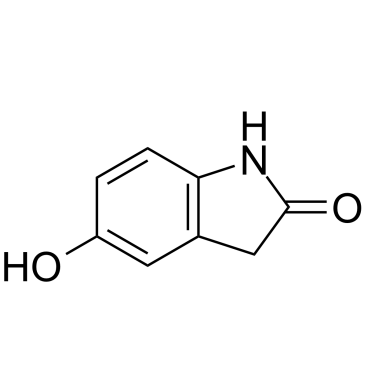
-
GC46705
5-Methoxycanthinone
La 5-metoxicantinona es un inhibidor activo por vÍa oral de las cepas de Leishmania.

-
GC40380
5-OxoETE
5-OxoETE is a polyunsaturated keto acid formed by the oxidation of 5-HETE in human neutrophils by a specific dehydrogenase.

-
GC46712
5-Phenyllevulinic Acid
A fungal metabolite

-
GC46079
5-Tricosylresorcinol
5-Tricosilresorcinolthe es el primer quiste de lÍpidos.

-
GC49676
6β-hydroxy Budesonide
A metabolite of budesonide
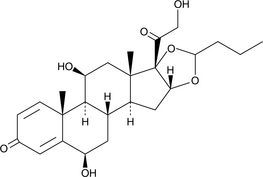
-
GC49629
6β-hydroxy Prednisolone
A metabolite of prednisolone

-
GC19536
6'-Sialyllactose Sodium Salt
6'-La sialillactosa (sÓdica), un oligosacÁrido predominante en la leche, reduce la internalizaciÓn de Pseudomonas aeruginosa en los neumocitos humanos.

-
GC45772
6(5H)-Phenanthridinone
An inhibitor of PARP1 and 2

-
GC41424
6(S)-Lipoxin A4
The lipoxins are trihydroxy fatty acids containing a 7,9,11,13-conjugated tetraene.

-
GC46721
6-Chloro-2-fluoropurine
A heterocyclic building block

-
GC49551
6-Chloropurine Riboside
A nucleoside precursor

-
GC49749
6-Deoxypenciclovir
An inactive metabolite of famciclovir

-
GC45955
6-Ethyl-2,7-dimethoxyjuglone
La 6-etil-2,7-dimetoxijuglona es un metabolito aislado de hongos de agua dulce.

-
GC46724
6-Hydroxypyridin-3-ylboronic Acid
A heterocyclic building block

-
GC49235
6-Methylmercaptopurine
A metabolite of 6-mercaptopurine

-
GC49488
6-Methylmercaptopurine-d3
An internal standard for the quantification of 6-MMP

-
GC49864
6-Methylpterin
A derivative of folic acid
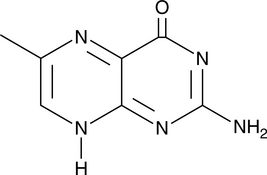
-
GC45715
6-Prenylindole
A bacterial metabolite

-
GC18776
6α-hydroxy Cholesterol
6α-hydroxy Cholesterol is an oxysterol that increases superoxide anion production in SK-N-BE cells when used at concentrations of 50 and 100 μM.
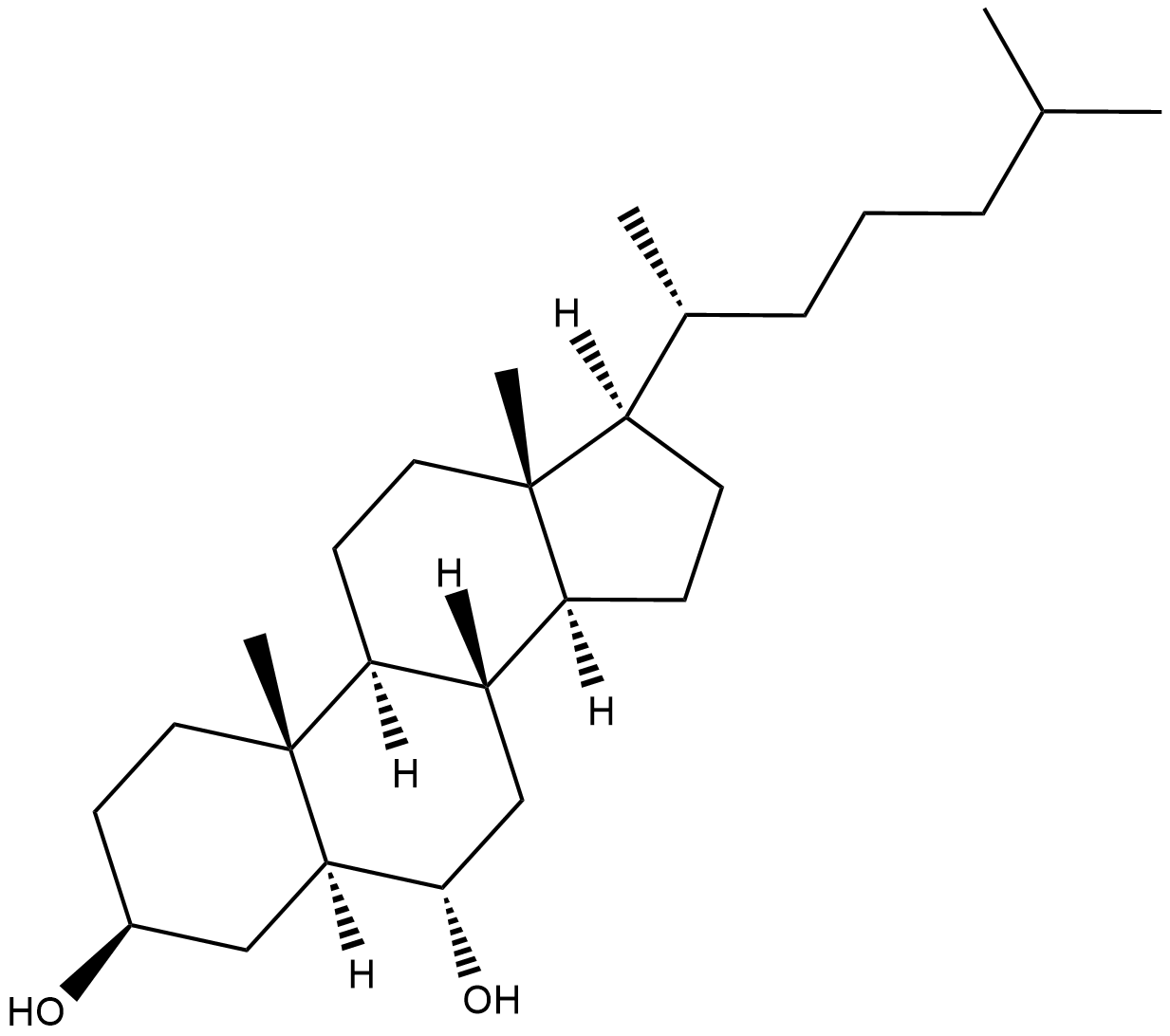
-
GC40202
7α-hydroxy Cholesterol-d7
7α-hydroxy Cholesterol-d7 is intended for use as an internal standard for the quantification of 7α-hydroxy cholesterol by GC- or LC-MS.

-
GC49206
7α-hydroxy Dehydroepiandrosterone
An active metabolite of dehydroepiandrosterone

-
GC46740
7β,27-dihydroxy Cholesterol
An oxysterol and agonist of RORγ and RORγt

-
GC52471
7(S),10(S)-DiHOME
An antibacterial hydroxy fatty acid

-
GC46732
7(S),17(S)-dihydroxy-8(E),10(Z),13(Z),15(E),19(Z)-Docosapentaenoic Acid
A metabolite of DPA with antiinflammatory properties

-
GC48769
7,10-dihydroxy-8(E)-Octadecenoic Acid
An antibacterial hydroxy fatty acid

-
GC46733
7,12-Dimethylbenz[a]anthracene
El 7,12-dimetilbenz[a]antraceno tiene actividad cancerÍgena como hidrocarburo aromÁtico policÍclico (HAP). El 7,12-dimetilbenz[a]antraceno se usa para inducir la formaciÓn de tumores en varios modelos de roedores.
![7,12-Dimethylbenz[a]anthracene Chemical Structure 7,12-Dimethylbenz[a]anthracene Chemical Structure](/media/struct/GC4/GC46733.png)
-
GC35184
7,3',4'-Tri-O-methylluteolin
La 7,3',4'-tri-O-metilluteolina (5-hidroxi-3',4',7-trimetoxiflavona), un compuesto flavonoide, posee potentes efectos antiinflamatorios en la lÍnea celular de macrÓfagos inducida por LPS mediada por la inhibiciÓn de liberaciÓn de mediadores inflamatorios, NO, PGE2 y citocinas proinflamatorias.
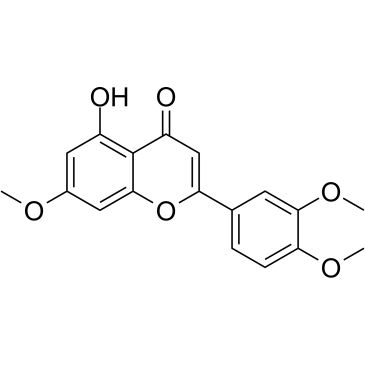
-
GC46080
7,3',4'-Trihydroxyflavone
7,3',4'-La trihidroxiflavona es un compuesto de aglicÓn flavonoide aislado de las vainas de habas.

-
GC35185
7,4'-Dihydroxyflavone
La 7,4'-dihidroxiflavona (7,4'-DHF) es un flavonoide aislado de Glycyrrhiza uralensis, el inhibidor de eotaxina/CCL11, tiene la capacidad de suprimir constantemente la producciÓn de eotaxina y prevenir los efectos adversos paradÓjicos de la dexametasona (Dex) sobre la producciÓn de eotaxina. 1].
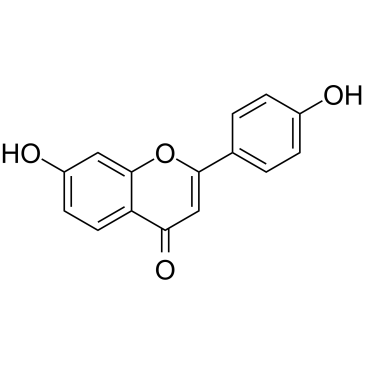
-
GC45673
7,8-Dihydroneopterin
La 7,8-dihidroneopterina, un marcador de inflamaciÓn, induce la apoptosis celular en astrocitos y neuronas a través de la mejora de la expresiÓn de Óxido nÍtrico sintasa (iNOS).



